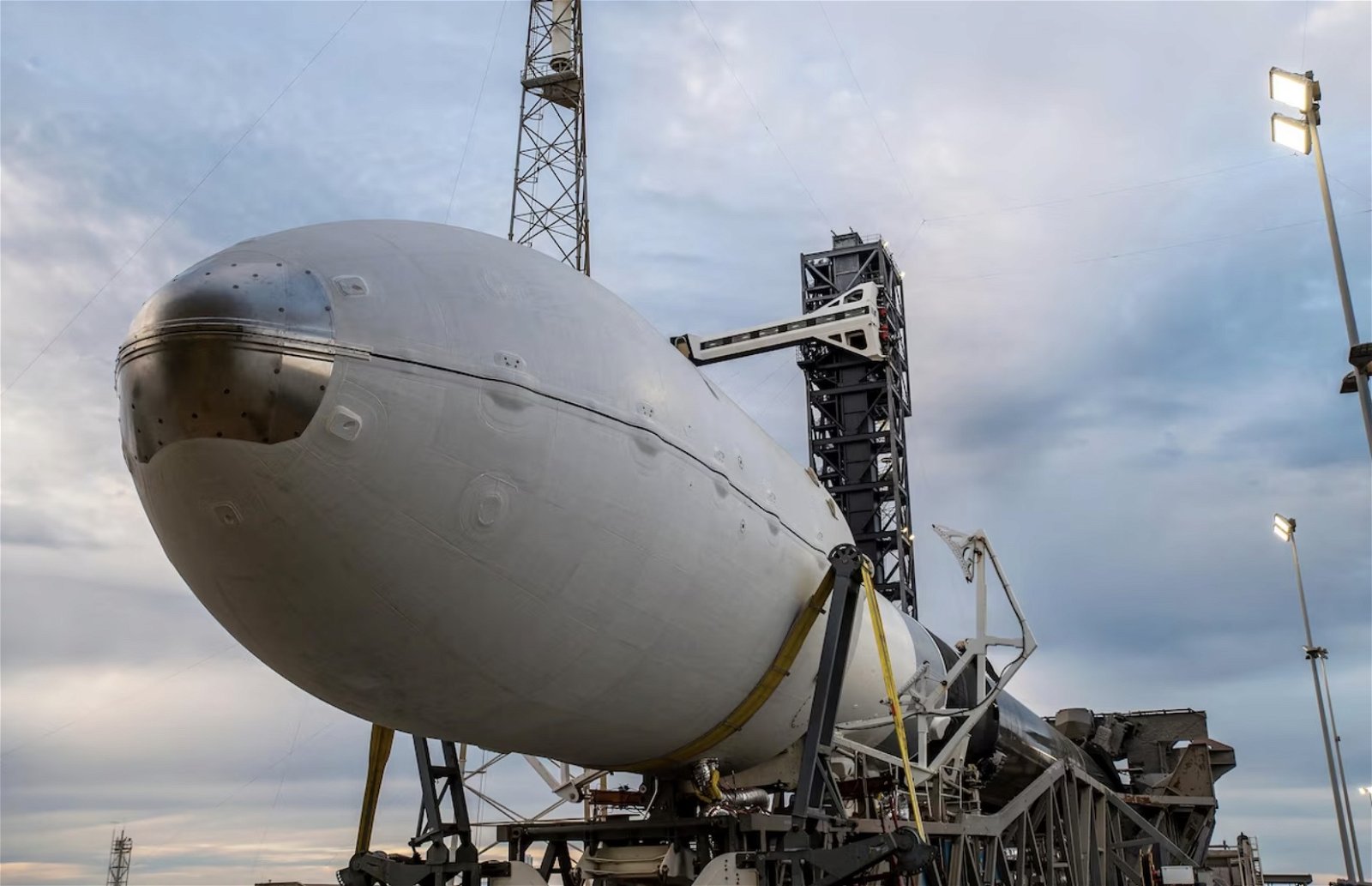

Welcome to this week’s Intelligence Brief… on Tuesday, the Department of Defense revealed its new Commercial Space Integration Strategy, detailing the Pentagon’s plans for integrating commercial space solutions into U.S. national security space operations. In our breakdown this week, we’ll be looking at 1) what the Pentagon’s new plan entails and how it aims to optimize its combined efforts with commercial space solutions, 2) the key priorities outlined in the new plan, and 3) what necessitates the new “hybrid” efforts that combine U.S. government and commercial operations, when compared with past U.S. government space objectives.
Quote of the Week
“The rapidly growing commercial space sector, highlighted in the 2022 National Defense Strategy, presents an opportunity for the Department that we cannot overlook.”
– Defense Secretary Lloyd Austin
Latest News: Recently at The Debrief, Chris Plain reported on a holographic breakthrough involving realistic-looking 3D holographic displays using custom software algorithms and an iPhone 14 screen. Elsewhere, Tim McMillan explains why recent reports about a new stealth submarine with an advanced “caterpillar drive” sound like something right out of a Tom Clancy novel (hint: it’s because it is). Also, I recently provided an update on a test that will bring the Army one step closer to unleashing its Long-Range Hypersonic Weapon capabilities. You can find all of our recent stories at the end of this week’s newsletter.
Podcasts: In the podcast department this week, over on The Debrief Weekly Report, Kenna and Stephanie cover the recent major developments involving Elon Musk’s Neuralink. Meanwhile, on The Micah Hanks Program, we look at the role of human deception in the discussion about the U.S. government’s involvement with UAP over the decades. You can subscribe to all The Debrief’s podcasts on our Podcasts Page.
Video News: On the latest installment of Rebelliously Curious, Chrissy Newton is joined by Agnieszka Pilat, a Polish-American artist and writer working at the intersection of robotics, Artificial Intelligence, and fine art. You can check out this interview and other great content from The Debrief on our official YouTube Channel.
The Pentagon Reveals Its New Commercial Space Integration Strategy
This week, the Pentagon revealed its latest strategic objectives to strengthen its efforts in space through cooperation with commercial partners.
“Increasingly, the commercial space sector is developing capabilities and services that have the potential to support national security,” the DoD said in a release on Tuesday, coinciding with the official release of its new Commercial Space Integration Strategy.
The new strategy outlines the Pentagon’s plans to integrate commercial space technologies into its space operations, highlighting government and commercial mission areas, as well as “hybrid” areas that include cyberspace operations, spacecraft operations, and other objectives that leverage the strengths of both commercial and official resources.
With the release of its new strategy, Assistant Secretary of Defense for Space Policy John Plumb said during a press conference that the impact of the commercial space industry on U.S. national security objectives “will be measured by how well the department can integrate commercial capabilities into the way we operate, both in peacetime and in conflict.”
Key Priorities and Areas of Focus
Among the main objectives outlined in the DoD’s new Commercial Space Integration Strategy is a focus on ensuring that commercial solutions will be available and accessible when they are needed. For this to be achieved, the DoD plans to use contracts and other agreements to “address the cyber, data, and supply chain security requirements that commercial entities will need to meet to work with the Department.”
The new strategy also focuses on integration efforts to be in place before the onset of crisis conditions that present a need for them by undertaking peacetime integration of commercial space solutions, and working “with the Intelligence Community, allies, and partners to integrate commercial solutions into shared architectures.”


The third priority outlined in the new plan focuses on the promotion of safety and security in the operational space domain through the establishment of security conditions that integrate commercial space solutions. “The Department will leverage a range of tools across all domains to deter aggression against and defeat threats to U.S. national security space interests,” the new strategy states, adding that where appropriate, commercial space solutions will be utilized for this. A threefold plan that combines norms and standards conducive to a safe space environment, threat information sharing with the commercial space sector, and financial protection through traditional commercial insurance, as well as U.S. government-provided insurance and other means of protection, are suggested as potential ways of mitigating risk.
Finally, the new strategy aims to promote the development of new commercial space technologies specifically for use by the Joint Force. “The Department will use a full range of available financial, contractual, and policy tools to rapidly field and scale commercial technology, attract private investment and commercial lenders, assist in clearing regulatory hurdles where national security imperatives are present, and ultimately bring new commercial solutions to the warfighter at speed,” the strategy explains.
Space 2.0: Government Integration with Commercial Space Solutions
In the past, the risks inherent to spaceflight operations limited significant participation by the commercial sector, leaving nearly all advancement in space exploration and orbital operations in the hands of governments. With the 21st-century rise of commercial space companies, the DoD’s new strategy aims to capitalize on the shift toward U.S. government cooperation with commercial space solutions and keep such efforts in line with the DoD’s National Defense Strategy.


The Pentagon called the new strategy “a clear indication that the department wants to work with commercial firms across the spectrum of space,” noting that development and production of scalable new technologies will likely help to offer new means of enhancing the DoD’s space capabilities as the potential challenges of militarization of space become increasingly apparent.
“This strategy aligns efforts from across the Pentagon to overcome legacy practices and harness the ingenuity of the commercial space sector,” Plumb said on Tuesday.
“Doing so will both enhance resilience and strengthen deterrence.”
That concludes this week’s installment of The Intelligence Brief. You can read past editions of The Intelligence Brief at our website, or if you found this installment online, don’t forget to subscribe and get future email editions from us here. Also, if you have a tip or other information you’d like to send along directly to me, you can email me at micah [@] thedebrief [dot] org, or Tweet at me @MicahHanks.


Here are the top stories we’re covering right now…
- Holographic Breakthrough: Scientists Create Full-Color 3D Holographic Displays with Ordinary Smartphone Screen
Scientists say they have created realistic-looking 3D holographic displays using custom software algorithms and an iPhone 14 screen.
- Media Outlets Sunk By April Fool’s Prank of the Navy’s New “Caterpillar Drive” Stealth Submarine
Reports about a new stealth submarine with an advanced “caterpillar drive” sounds like something right out of a Tom Clancy novel… because it is.
- Incredible High-Tech Window Coating Allows Visible Light Through but Blocks Heat
Scientists have developed a new high-tech window coating that blocks unwanted heat but allows all visible light through.
- Mystery Object That Crashed Through Roof of Florida Home Prompts NASA Investigation
An object that tore through the roof of a family home near Naples, Florida, last month is currently being investigated by NASA to determine its origins.
- Evidence of Quantum Gravity Remains Elusive in South Pole Experiments. An Odd Particle Could Hold the Answer.
Quantum Gravity experiments at the South Pole failed to discover elusive effects on the quantum coherence of neutrinos.
- Controversial Solution to 70,000-Year-Old Mystery Challenges Previous Understandings of Ancient Human Expansion
A new solution to the 70,000-year-old mystery is challenging previous understandings of ancient human expansion across the globe.
- The U.S. Army Has Officially Begun Equipping Soldiers with its Next Generation Squad Weapon Systems
The U.S. military is equipping its Army units with Next Generation Squad Weapon (NGSW) systems in advance of spring training exercises that will begin this month.
- Explosive Investigation Links Russia’s Shadowy “Unit 29155” to ‘Havana Syndrome’ Attacks on U.S. Officials Worldwide
A new investigation has linked Russia’s GRU Unit 29155 to ‘Havana Syndrome’ attacks, challenging the U.S. government’s official stance.
- NASA’s Curiosity Rover Moves Closer to Solving the Mysterious Disappearance of Water on Mars
NASA’s Curiosity Rover has begun investigations of an area that could offer significant insights into the disappearance of liquid water on Mars.
- Innovative New High-Boost DC Power Converter Could be a Game-Changer for Electronics
Researchers report the development of an innovative new concept for a new DC power converter with greater efficiency at lower cost.
- U.S. Army Moves Closer to Unleashing ‘Dark Eagle’ Long-Range Hypersonic Weapon in Major Test with U.S. Navy
The U.S. Navy is preparing for a test that will bring the Army one step closer to unleashing its Long-Range Hypersonic Weapon capabilities.
- Quantum Mechanics Hack Could Lead to “Unbreakable” Metals by Leveraging Weird Distortion of Atoms
Scientists say they have created a new method of testing materials that allows predictions to be made about their strength, which may eventually lead to virtually “unbreakable” metals.
- Tidal Disruption Events: When Suns Moving at Light Speed Around a Black Hole Collide
What are tidal disruption events? Try imagining the sun moving close to the speed of light and colliding with another sun as they move around a black hole.
- Eating an Avocado a Day Had This Totally Unexpected Result
New research shows that study subjects who ate an avocado a day experience this totally unexpected health benefit.
- Speeding Space Object Spotted by NASA-Funded Sungrazer Project Marks a Major New Milestone
The NASA-funded Sungrazer Project has detected its 5,000th comet, the latest milestone in what has become one of the most successful programs of its kind.
- Project Convergence: The U.S. Army’s Latest Experiments with the Warfighting Tech of Tomorrow
This week, the U.S. Army is looking ahead to the battlefield environment of tomorrow with the completion of its massive Project Convergence experiments.
- Space Snowman: Astronomers Try to Unravel a Mysterious Object at the Edge of the Solar System
A team of researchers say they may have finally unraveled the mysteries of a distant space object known affectionately as “Space Snowman.”
- Neuralink Implant Allows Man to Tweet and Play Chess Using Only His Mind, Like “Using the Force”
In the future we may be able to post on social media using only our minds, thanks to Neuralink’s brain-computer interface technology.
